We will even outlast a major planetary epidemic, as our legendary Board of Directors plots and schemes on our screens. In our latest Call for Artists, however, we need to confront this matter of screens. Because they're getting tedious.
During our entire existence as Share Festival, we have valiantly championed digital art on screens. We have favored net.art, software art, motion graphics, and interactive video installations. We've encouraged our Favorite creative artists with awards, prize money, and even Artmaker bags full of tools
However, now that we've witnessed every aspect of art, culture, commerce, politics and education all boxed into the glass of tiny screens, we need a change.
Our new theme for 2021, "Searchlight," is about digital art that escapes the limits of screens. We're searching for appealing, bright, dazzling, airy art also for exterior walls, tall buildings, and even the clouds overhead. We want psychedelic light shows and warbling laser beams.
At the Share Festival, we love device art and machine art. It's rare for us to have a show without at least one vigorous, striking, noisy gadget that might possibly kill somebody. This year, however, we judge that the contagious air is enough of a risk for our Turinese public, so if you have machinery to offer us, it needs to be free-breathing machinery, such as fountains, drones, firework shows or smoke signals. Trust us, devicemakers, we still adore you! Let's talk!
With our "Searchlight" theme for the year 2021, we anticipate the expressive world that exists beyond the pandemic and its many, stifling. bonsai-like limitations. So we want the boundless, the airy and the mind expanding vistas. Someday we will return to our festival's heritage, which is the historic, epic scale of Turinese "cinema muto" with its surging crowds, swords, sandals and erupting volcanoes.
In the meantime, though, we need to get away from our desks. Together, let us breathe the open air of creative freedom, under comet-like vistas of novelty!
with Chiara Garibaldi, Davide Gomba, Rappresentanti Enti Sostenitori
with Bruce Sterling
with Bruce Sterling and Alessandro Ludovico
with Diego Scroppo, Chiara Garibaldi, Stefano Beltramo and Bruce Sterling
with Jasmina Tesanovic, Francesca Fini, Antonella Mignone and Laura Viale
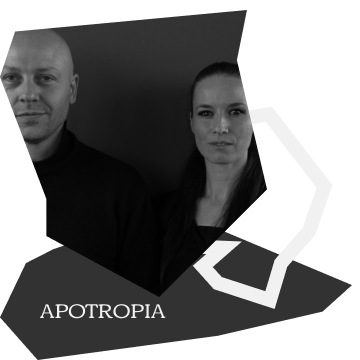

The stars provide us with a photograph of the past, yet for millennia man has been observing the trajectories of celestial bodies in order to interpret the future. The inter-connection and the cyclical path of celestial bodies are the fundamental parameters that allow men to hypothesize future events by deciphering those of the past.
"In Circuito" is an installation that focuses on cyclicity of nature through geometries, sounds and light projections within a "circumscribed space of sky": a templum in its original meaning.
A work by APOTROPIA (Antonella Mignone + Cristiano Panepuccia) with the collaboration of Giovanni Belli
APOTROPIA is an artist duo formed by Antonella Mignone and Cristiano Panepuccia. They work across video, dance, performance, sound and installation and explore the philosophical, anthropological and scientific elements of human culture.


Acousmatic System for Plant and Human with Three Algorithms
ASPH3A is a work / performance, an endless feedback inserted within a modular system that feeds itself by generating new sound forms with a strong organic component. The body and the plant interact with each other and simultaneously interact with the acoustic instrument and the modular synthesizer. The man / machine interaction is disrupted thanks to the introduction of another actor from the plant kingdom. The number 3 represents the elements that enter the network, determining a generative and acousmatic system capable of developing light, movement and sound, the main component of the entire work.
The work questions the relationships and connections that are established within the evolutionary process by changing relationships and subordinations. The human / machine dichotomy disappears as it incorporates a third component as important as the other two, thus reaching a new human / plant / machine sequence. Each component brings with it the transformations that led to its shape and help to define the physiognomy of the work.
Giorgio Alloatti and Liliana Caruso
In the general heterogeneity of artistic practices an objective vision of the contents is given to us by
our cats who love experimental music. We do not have a direct path or precise patterns but a genuine
communicative emergency through which we try to bring noise in a psychoanalytic sense around the cosmos
by conveying the different plots and meanings through literature, philosophy and meditation.
Our works are formed through various means, research, experimentation, writing, circus art, drawing,
electronics and pure, dark and tangible sound.
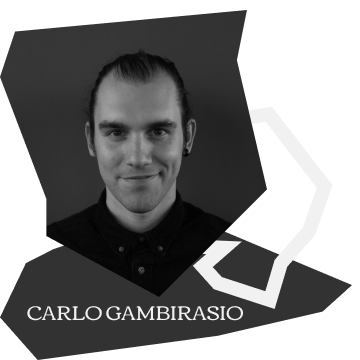

mbrace extend extinguish is a market strategy launched by Microsoft and adopted by big techs to gain market hegemony on the continuous construction of the postreal.
In the context of the semi-spontaneous birth of new digital interconnection technologies, when the new is still too immature to attract investment, open source communities are the engine of innovation.
After these first moments of embryonic development, when the new instruments gain audience and the heavyweights come into play, the mechanism is triggered: open source technologies are adopted with minimal re-elaborated versions to be extended to the general public and immediately subservient to production needs.
The artwork is a portrait of the schizophrenic anxiety of this process: the continuous proliferation of concepts and systems that provide structure to our synthetic reality takes shape in the incessant, energetic debate of air flows, caged in the tangible form of plastic, made visible and therefore usable, by the very agent of its constraint.
The bio-capitalist exploitation, in itself neither good nor bad, is a futuristic-looking gear, taken as an constituent element of a system that needs only awareness to be twisted against itself.
Accelerationism, as a revengeful system, is an instrument of this awareness, in a game of parties that, in the context of digitization, sees the user as a subject with unprecedented potential.
Carlo Gambirasio (1994, Verona) holds a BFA and MFA from NABA. Carlo's reflection comes from a careful analysis of contemporary visual culture. His works combine imaginary devices, new technologies, reflect on the rules of "artificial" worlds with the aim of understanding and modifying them. Some of the exhibitions in which he participated are: BodyLights # 1 (BO), Porto dell’Arte (MI); Roasted Spin, FuturDome (MI); Exi Shapes, Spazio Morel (Lugano); The Great Learning, La Triennale (MI).
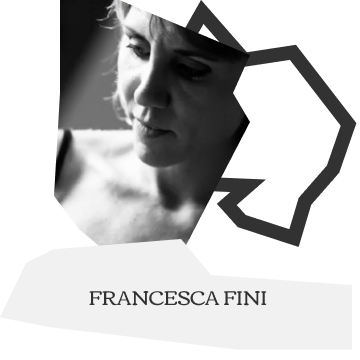

RE/FLUO is an artistic provocation that examines the potential and contradictions of crypto-art, through the language of performance art.
At the center of the scene is set a small photo studio dominated by a cubic Lightbox of a white fabric. The Lightbox, enlightened by two neon panels, includes and isolates a series of geometric assemblies of waste, scraps, non-organic garbage of various types (such as plastic, jagged metal, shreds of fabric) to create bizarre still-life 2.0.
The works, inserted in the Lightbox and slowly rotated on an electric display, is scanned with a photogrammetric device that transforms them into three-dimensional digital objects. Virtual sculptures that are placed on the NFT market to be sold to the highest bidder. This process of collective production, placing on the market and selling are acted out, documented and shown to the public in real time during the Festival.
Francesca Fini is an interdisciplinary artist who has been moving for years in the contemporary area where arts hybridize, trying to distill a personal synthesis precisely in the contemporary performative and video performative language. Over the years she has presented her work at the Museo MACRO e MAXXI in Rome, at the Guggenheim in Bilbao, at the Schusev State Museum of Architecture of Moscow, at Tese dell’Arsenale of Venice, at the Georgia Institute of Technology and in many national and international academic fields. In 2014 and 2016 she was selected by Bob Wilson to participate in the artistic residency at the Watermill Center in New York and subsequently she was invited to the Triennale di Milano for a Watermill event at the Illy Art Lab. She is based in Italy, but she exhibits and works all over the world. In 2016 she completed the experimental movie “Ofelia non annega” (With Istituto Luce Cinecittà), included by Adriano Aprà among the best Italian films of the last 20 years. In 2020 she won the Share Prize. Treccani Encyclopedia mentions her as one of the most significant artists of this language in Italy as the new cyber-performance voice.

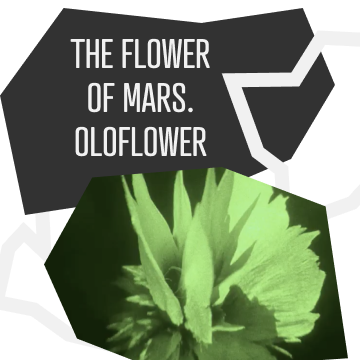
The ‘Holoflower’ is a laser transmission holo- gram of a flower generated by magnetic fields.
Result of a study done by the artist for THE FLOWER OF MARS, an interplanetary art project aiming to bring a seed of a new bio- logical species of flower to Mars, plant it and observe its growth. The hologram can be de- fined as a recording of light on a holographic plate or film. In the case of a 3D image, the re- cording is obtained by the interference of two laser beams, which allows three-dimensional reproduction by the effect of refraction.Using an angled mirror, a laser beam is separated into two beams, one of the object and one of the reflection. The Flower of Mars is a “project in power”. Something that does not ex- ist yet, but already exists, idea and reality, real and virtual. Mathematical mod- els of the last frontier for the construction of the universe are based precisely on oleo- graphic principles, The idea that The Flower of Mars is already a reality, even if not an objective one, is the key to the artist’s choice of the tech- nique of holography, made by the expert holographer Mauro Melotti.
Alessandro Sciaraffa (Torino, 1976) studied architecture, electronic music and sound design. Winner of the 9th edition of Italian Council (2020), he is one of the founders of the WHYOFF experimental music collective. Focused on sound and on multiple relationships between matter, space and time, his artistic research finds expression in performances and in the elaboration of installations and sound sculptures. Among his personal exhibitions we highlight: Sinfonia, TSE Art Destination-Nur Sultan (2022); Symphony, GAM ‒ Civic Gallery of Modern and Contemporary Art, Turin (2021); Aurora, Ground Moscow, Moscow (2019); The Winter Symphony, Hermitage Museum, St. Petersburg (2019); De Umbris Idearum, Monumental Complex of San Severo al Pendino, Naples (2019); Cosmonautics, Costigliole d'Asti Castle (2019); Between a Dusk and a Dawn there is an Eclipse, Galerie Mazzoli, Berlin (2017); Fontanella, Galerie Italienne, Paris (2016); The Lunatics speak to the moon, Galleria Giorgio Persano, Turin (2014); Greater Turin, Sandretto Re Rebaudengo Foundation, Turin (2013); VITRINE, GAM - Civic Gallery of Modern and Contemporary Art, Turin (2012); I bring you the sea, Merz Foundation, Turin (2011).

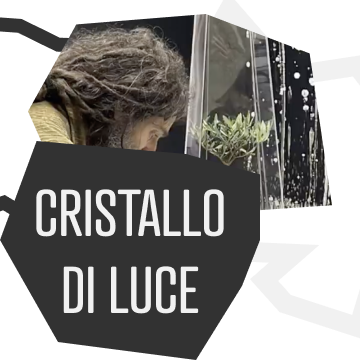
Cristallo di Luce is a public work of art with a high innovative and technological content. It is born as part of Artmaker# 5 and winner of the Artwaves by Compagnia di San Paolo, which uses photovoltaics for energy generation.
For Artmaker#5 a 1:10 scale model of the sculpture will be presented, that will be 7 meters high, which simulates the operation through sostenible technologies for charging small devices, such as tablets and phones.
Presented in Aosta in an exhibition and conference within T*Danse with the partner TIda Teatro Instabile di Aosta, it was also at the center of the workshop in collaboration with the Department of the Castello di Rivoli Museo d’Arte Contemporanea at the IIS Natta of Rivoli.
Diego Scroppo (Turin, 1981) is a graduate of the Accademia Albertina di Belle Arti. He took part in the curatorial programme run by Unidee Città dell’arte, Fondazione Pistoletto, an artistic project with the Le Fresnoy Institute of Lille, and special projects at the Fondazione Spinola Banna for the Arts. He was Felice Casorati Prize winner. His works have been exhibited at: Fourth Biennale China-Italia of Contemporary Art, Castello di Rivoli, Patricia and Phillip Frost Museum, Miami, Museo Arte Contemporanea Villa Croce, Genova, XIII Biennale Internazionale di Scultura, Carrara, Fondazione Merz, Torino, Biennale Internazionale dei Giovani Artisti, RuArts Foundation of Contemporary Art, Mosca. Dal 2017 è stato selezionato dal comitato artistico-scientifico di The Sharing come uno degli artisti del progetto Artmaker.
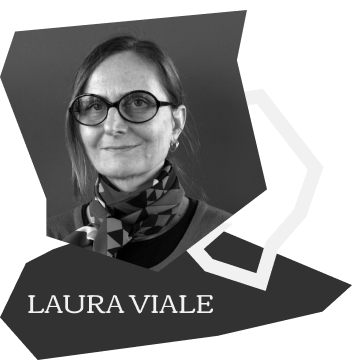
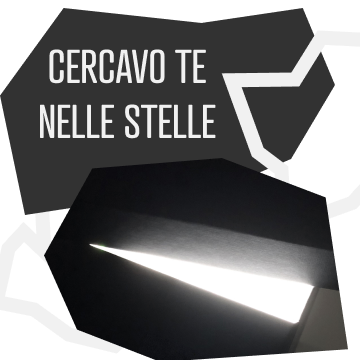
“Cercavo te nelle stelle quando le interrogavo bambino.”
PSR B0329+54 is a pulsar star about 3460 light years away from the Earth, in the Camelopardalis Constellation. It is approximately 5 million years old. Pulsars have originated from the explosion of very large supernova stars, of which an extremely smaller “heart” remains, where matter is in a state of enormous compression. They can be intercepted thanks to their radio signal, a “pulsation” that corresponds to the rotation on their own axis. .
Entitled with the first lines of an intense poem by Primo Levi, Laura Viale's work transforms the radio signal of PSR B0329+54 into a light signal.
Laura Viale (Turin, 1967) is based in Brussels. In her work nature and artifice, reality and fiction, provide the material for investigating perceptive thresholds, suspended between concrete experience and abstraction. Through nature – in urban contexts as well as in wild places – she questions spaces of possible intersection between the external world and interiority. Her projects take shape through a wide range of media including photography, drawing, installation, video and digital techniques.
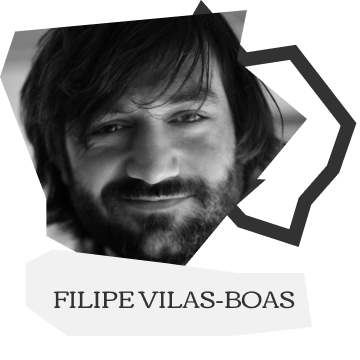

Instead of choosing a dark dystopian future made of fortresses, let’s explore brighters worlds in the legacy of the Enlightenment, let’s use our abilities as a tutor, direction or searchlight.
n the necessary critique of the deviant uses of digital technology, facial recognition holds a special place. And for good reason: used as a surveillance tool, it is in fact an infringement of our fundamental freedoms. Far from me the idea to legitimize any liberticide use, I try here a poetic and humanistic detour in order not to throw the baby out with the bathwater. Instead of focusing on identity recognition, I diverted the framework of this technology to develop a form of artificial empathy.
Our face being our very first social interface, we are constantly literally speaking with it. Based on this (sur)face language recognition and analysis I created Mixed Feelings.
An interactive installation that draws its inspiration from the emotions identifiable on our face to compose and improvise music in real time. The device combines a facial recognition system with a neural network trained to create music. With Mixed Feelings, I explore the poetic potential of facial recognition by using the detection of emotions, or at least of the expressions that compose them, as an input to the musical creation. The listener thus finds him/herself analyzed and converted in an infinite musical mirror game between human emotion and artificial intelligence. The project generally questions the surveillance regimes we are living in and more deeply, the kind of empathy we are developing in our highly automated societies, the way we are connected and read others' state of mind and emotions including our own ones.
Conceptual artist exploring our use of technology and its ethical and aesthetic implications. Without being a naive tech utopist or a reluctant technophobe, he critically and ironically examines our hypermodern times and more particularly the notion of technological progress. His installations, performances and videos question the global digitalization of our societies. Designated Portuguese Emerging Artist in 2018 and 2019, Vilas-Boas exhibited internationally notably at Le 104, ADAF, KIKK, Die Digitale Düsseldorf, Fondation EDF, Ibrida, Linz FMR, CCBB Belo Horizonte, MAAT Museum and Tate Modern.


As part of SHARE FESTIVAL, within the Artmaker project, the PROGETTO SPECIALE of the XVI Edition, CRISTALLO DI LUCE by the Turin artist Diego Scroppo, was born.
The sculpture, shaped like the crystal of our Alps mountains that recalls the peak of Matterhorn, will be about 7 meters high with a tetragonal geometry. It will be able to generate, from sustainable sources, electric energy that can be used in public and private sectors for numerous uses, including the fuelling of street lighting, charging vehicles and electrical devices. It is a public, nomad work and a traveling exhibition that has the value added of having practical utility in itself, as its very location on the public area has the function of providing energy, instead of consuming it. Also, to produce it and make it available in the urban context, thus responding to the social function of use by citizens.
Diego Scroppo’s works capture the transcendent and put it into the matter to return it to the public in its essential ineffability. The artist manages to reproduce the life cycle in the materialization of symbols that comes to life in his works and then return to being invisible, but kept in the viewer’s conscience. Similarly, Cristallo di Luce becomes a public good that generates light and does not consume energy, it also makes it available, becoming a means of community utility.
Thanks to the technical scientific team that has been created, the work is under construction thanks to a hybrid of green technologies: it will be used to implement the energy supply of the light it will generate, to power vehicles for a new electric mobility, to recharge devices through different types of technologies, offering beauty in addition to energy.
The artwork becomes, also, the fulcrum of the cultural event within the Artwaves call of Compagnia di San Paolo, presented in co-production with TiDA-Teatro Instabile di Aosta and thanks to the partnership of Associazione Fonosintesi - with Festival Chamoisic, around which revolves an traveling exhibition and a series of performative actions aimed at creating sustainable development models for public and private spaces through art, culture and technologies with high innovative and scientific value.The itinerant project is established as a cultural event in several stages on the territory of Piemonte and Valle d’Aosta, specifically in the cities of Aosta, Chamois and Turin.
Regione Piemonte, Camera di Commercio di Torino, Punto Impresa Digitale, Compagnia di San Paolo, FONDAZIONE CRT, Goethe Institut, Città di Torino, Torino Creativa
Maker Faire, Torino Incontra, Torino Wireless, The Others, Accedemmia Albertina di Belle Arti di Torino, Università degli Studi di Torino, Liceo Augusto Monti, APID Imprenditorialità Donna
Dunter, Freecards
The Sharing
Chiara Garibaldi
Bruce Sterling
Jasmina Tesanovic, Angelo Comino
Francesca Ventura
Alice Barotto
Dunter
Adfarm
Giacomo Clemente
Chiara Garibaldi
Giovanni Bocchino, Edoardo Motevallian
Francesca Ventura, Giulio Fossati
Erika Bertolino, Francesca Ventura
Max Casacci, Alessandro Ludovico, Erica Villa, Jasmina Tesanovic, Bruce Sterling
Joao Alves, David Bowen, Quiet Ensemble, Ooopstudio, Lorenz Potthast, Theresa Schubert
Giorgio Alloatti e Liliana Caruso Apotropia, Francesca Fini, Carlo Gambirasio, Alessandro Sciaraffa, Diego Scroppo, Laura Viale, Filipe Vilas-Boas
Diego Scroppo
Andrea Taddei